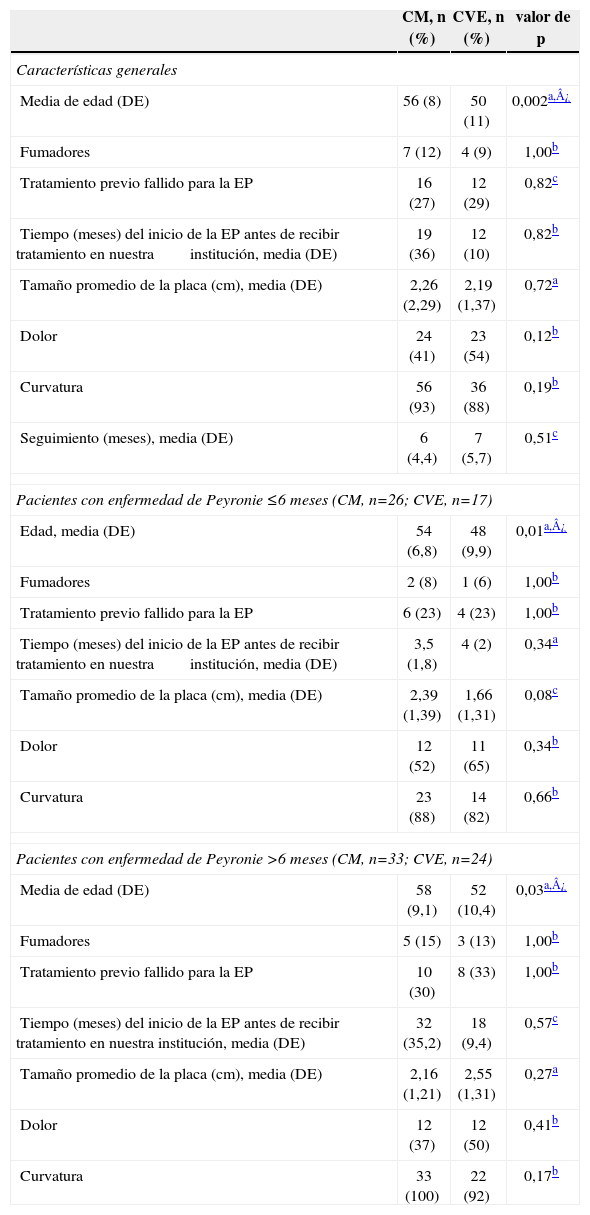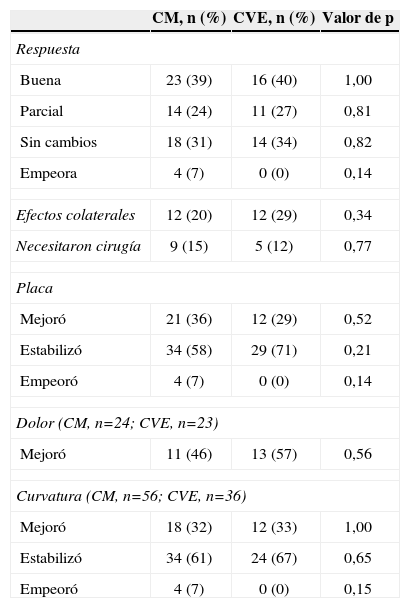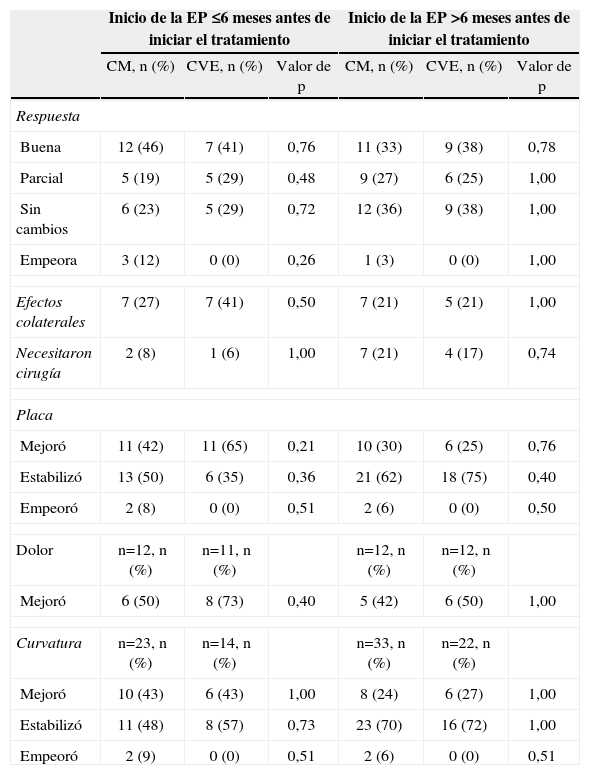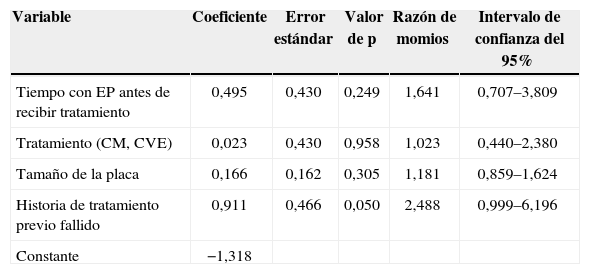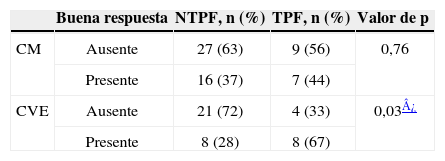Revisar de manera retrospectiva la respuesta de pacientes con enfermedad de Peyronie (EP) tratados con colchicina como monoterapia (CM) o combinada con vitamina E (CVE).
Material y métodosEvaluamos 100 pacientes con EP. La CM por vía oral en dosis de 1,5mg/día fue recibida por 59 pacientes, y la CVE en dosis de 1,5/800mg/día fue recibida por 41 pacientes. La respuesta fue definida de la siguiente manera: respuesta buena, cuando al menos 2 de las siguientes condiciones fueron alcanzadas: disminución/estabilización de la curvatura y/o tamaño de la placa y/o alivio del dolor; respuesta parcial, cuando se alcanzó al menos una de las condiciones anteriores. Así como ausencia de respuesta o empeoramiento. No hubo diferencias significativas en los grupos.
ResultadosHubo buena respuesta en el 39 y el 41% de los pacientes del grupo CM y CVE, respectivamente. Mejora por variable: tamaño de la placa en el 36 vs. el 29%, alivio del dolor en el 45 vs. el 57%, curvatura en el 32 vs. el 33% en los grupos CM y CVE, respectivamente. Ninguna de estas diferencias fue estadísticamente significativa.
ConclusionesLa CVE no demostró diferencias estadísticamente significativas en la eficacia del alivio del dolor, curvatura y tamaño/consistencia de la placa vs. el grupo control. Sin embargo, existe ligera evidencia de un efecto pronóstico positivo en el tratamiento conservador de la EP si hay antecedente de tratamiento previo fallido, que fue estadísticamente significativo en el grupo CVE, fomentando la teoría del tratamiento combinado. Un estudio aleatorizado, doble ciego controlado con placebo debe realizarse para confirmar estos resultados.
To retrospectively review the response of patients with Peyronie's disease (PD) treated with colchicine as monotherapy and colchicine plus Vitamin E.
Material and methodsWe evaluated 100 men with PD. A dose of 1.5mg/day oral Colchicine as monotherapy (CCM) was given to 59 patients and 1.5/800mg/day oral Colchicine/Vitamin E (CCVE) to 41. Response was categorized as follows: Good response, when at least 2 of the following conditions were achieved: Decrease/stabilization of curvature and/or plaque and/or pain relief. Partial response if one of the former conditions were observed. No response and worsening. No statistical differences between groups were found.
ResultsGood response was observed in 39% vs 41% in the CCM and CCVE groups respectively. When looking at each variable, we observed improvement on the plaque's size in 36 vs 29%, pain relief in 46 vs 57% and curvature 32 vs 33% in the CCM and CCVE respectively. None of these differences were statistically significant.
ConclusionOral conservative treatment with CCVE failed to show statistically significant differences in efficacy in pain relief, penile curvature or plaque size against CCM in this study. However, there is slight evidence of a positive prognostic effect on the conservative treatment when history of previous unsuccessful PD treatment was recorded, this was statistically significant in the CCVE group, supporting the theory of a combined treatment. A randomized double blind placebo controlled study with a sample size calculation should be performed to confirm our results.
Artículo
Comprando el artículo el PDF del mismo podrá ser descargado
Precio 19,34 €
Comprar ahora







